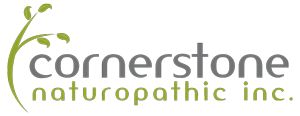Advances in medicine often take specific branches of care forward in significant ways, but one form of care that seems to be constantly evolving as advances are made is wound healing. Ulcers, surgical incisions, and a variety of other wound types are treatable in ways they simply weren’t in recent history.
For example, natural means of wound healing, driven by research and application, have emerged as a beneficial means of reducing the amount of time a wound requires to close, as well as reducing area-specific infections.
Wound healing
The treatment of a wound is often considered a success is two equally challenging criteria are met: that the wound itself is quick to close and absent any complication, and that the residual scarring is aesthetically manageable or pleasing. Realistically, the former is of the utmost importance when a patient suffers a wound, but advances in medicine have made the latter possible in many ways, as well.
A lot of the time things come down to the skin. From a functionality perspective, skin serves as a protective barrier and, when damaged, can impact surrounding areas of the body as well as the overall integrity of our bodily systems. With that in mind, rapid healing of a wound serves to decrease the strain on our circulatory, immune, and physiological systems respectively. More information can be found on the dedicated Cornerstone Wound Healing Program page.
Diabetic Ulcers
Consider diabetic ulcers, which can occur as a result of multiple medical conditions. Diabetics are more apt to ulcers on their feet due to a variety of factors such as atherosclerotic disease, decreased blood flow, increased levels of inflammation and increased stickiness of platelets. The largest contributing factor in foot ulcers in diabetics lies in nerve damage in the feet (peripheral neuropathy) which is a result elevated sugar levels in the blood stream.
It has been shown that nerves and small blood vessels become damaged when exposed to high levels of sugar in the blood stream. When nerves become damaged they are no longer able to communicate signals to the brain, thus if a patient can not feel pain in their feet they create blisters and eventually an ulcer due to mechanical trauma. In addition to this, due to the damaged blood vessels the ulcer heals extremely slowly due to decreased blood flow and decreased oxygen delivery.
In some cases, a physiological impairment of white blood cell function can make diabetic ulcers prone to infection; the reduced mobility of these cells can limit tissue creation and healing times. A diabetic ulcer left untreated can lead to very serious complications such as dry gangrene and amputation of toes or the entire foot.
Cornerstone’s approach to Diabetic Ulcers
Ozone
Because diabetic ulcers are unique in some of the ways they hinder healing, treatment must be adjusted to meet the specific needs of the wound(s). Ozone Therapy can improve ulcer recovery by externally increasing oxygenation (and thus healing) of the areas in question. Specifically this treatment sees affected areas enclosed in an ozone resistant bag which is populated with ozone, which is oxygen that’s been converted into gas of a particular, beneficial concentration. Ozone gas then circulates the area for approximately 10 to 20 minutes.
Ozone has a twofold effect. First it drastically increases oxygen delivery to the tissue. Due to the decreased blood flow of the ulcer the tissue becomes oxygen starved which creates an environment for gangrene. The second effect ozone has it that is destroys viruses and bacteria which it comes in contact with. Thus the wound itself becomes disinfected which of course is key to preventing spreading infection.
Nutrition
Nutrition plays a critical role in wound healing, and recommendations are aimed at decreasing blood sugar levels, increasing overall nutrient density of the diet, eliminating refined foods and sugar and increasing vitamins and minerals.
Supplements
Supplements are sometimes called upon in treating diabetic ulcers, such as antimicrobials including garlic and berberine. Alpha Lipoic Acid (ALA) has shown some benefit in decreasing nerve pain in the feet as well as protecting existing nerves from further damage, and although there are various forms of ALA, current research lends us to recommending only R+ ALA.
Platelet Rich Plasma (PRP)
Platelet Rich Plasma has highly positive effects in terms of expediting wound healing, and is used only once the infection is under control through the use of ozone, nutrition, and antimicrobials in addition to prescribed antibiotics. At this stage, blood is drawn from the patiend, spun, and has platelets extracted. These platelets are concentrated at four to eight times the amount found in regular circulating blood, and will help to speed the healing process of the ulver. PRP is applied to the ulver once the wound has been sterlizied, and this process can be applied once a week in addition to a patient’s regular treatments.
Intravenous Therapy (IV)
Intravenous delivery of anti-oxidants such as glutathione helps speed wound recovery as well. In addition eliminating any underlying deficiency these nutrients are also critical to the wound healing process, as the body requires vast amounts to repair damage. Key nutrients in this case are zinc and vitamin C.
For more information, feel free to contact us directly via our website, or call us here.






